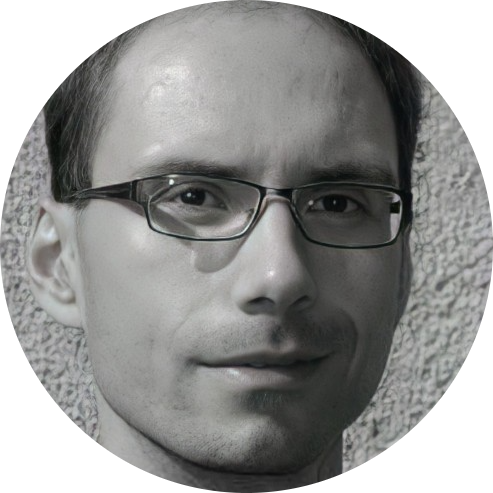Jean-Michel Roger

Jean-Michel Roger obtained a PhD in Automatic and AI in 1995. He then specialized in chemometrics and focused his research on the problem of robustness of NIR calibration. To this end, he participated in many research projects dedicated to online NIR sensors. In the 2000s, he participated in the development of a family of methods, based on orthogonal projections, to make calibration models insensitive to spectral perturbations. He is still working on these problems and is interested, among other things, in domain adaptation methods. In 2016, he received the Tomas Hirschfeld Award from ICNIRS, for his work in chemometrics devoted to NIRS. Also in 2016, he received the French Applied Research Award, for his involvement in the development of waste sorting machines. In 2017, he created ChemHouse, a research group in chemometrics, forge of the ChemFlow software and source of many international collaborations (see https://chemproject.org).
Lecture: Increasing the robustness of chemometric models by calibration transfer, orthogonal projections, domain adaptation
Because they rely on indirect measurements, spectrometry-based sensors require the use of a calibration model. Typically, this model is performed on a sample basis that is representative of variations in the variable of interest. However, the use of these sensors can subject this model to robustness problems. These robustness problems are due to the variation of external factors, such as temperature, chemical composition or changes on the spectrometer. A strategy for dealing with robustness problems will be presented, depending on the availability of knowledge about the influencing factors. An overview of correction methods will be presented. A focus will then be made on robust modeling methods, in particular on methods using orthogonal projections and domain adaptation.
Krzysztof B Bec & Justyna Grabska


Krzysztof is a senior research fellow and project leader in Prof. Christian W Huck’s research team at University of Innsbruck in Austria. Before that he was a member of Prof. Yukihiro Ozaki’s lab. Krzysztof’s background is in physical and theoretical chemistry (PhD in 2014) and his experience in developing new methods gives him a unique perspective on NIR spectroscopy. He is an author of 75 articles, 1 book and 13 chapters, with most of those devoted to NIR spectroscopy. In addition to advancing NIR spectroscopy, he contributed into development of ATR-FUV-DUV spectroscopy and its applications. Krzysztof has received multiple fellowships including prestigious Postdoctoral Fellowship from JSPS (Japan), Postdoctoral Fellowship of the Government of Ireland, and Lise Meitner project leadership from FWF funding agency in Austria.
Justyna received her PhD in chemistry in 2015, where she focused on developing new methods of spectral analysis for NIR/MIR spectroscopy. She joined Professor Yukihiro Ozaki group (2016) where she pursued new research horizons in NIR spectroscopy. Justyna is currently working in Prof. Christian W. Huck (2019) laboratory, at University of Innsbruck in Austria. She applies cross-disciplinary methods of experimental spectroscopy, theoretical simulations, artificial intelligence and chemometrics for innovation of analytical spectroscopy and development of new applications. Justyna published over 50 scientific articles and 11 book chapters, with prime research interest in advancing NIR spectroscopy.
Lecture: In silico simulation of NIR spectra: fundamental insights, new discoveries and emerging possibilities for analytical applications
Quantum mechanical calculations are routinely used as a major support in mid-infrared (MIR) and Raman spectroscopy. In contrast, practical limitations for long time formed a barrier to developing a similar synergy between NIR spectroscopy and computational chemistry. Recent advances in theoretical methods enabled accurate simulations of NIR spectra of molecules reaching the size of long-chain fatty acids. In silico NIR spectroscopy, where the spectra are calculated ab initio, provide substantial improvement in our understanding of the overtones and combination bands that overlap in staggering numbers and create complex lineshape typical for NIR spectra. This improves the comprehension of the spectral information enabling access to rich and detail molecular footprint, essential for fundamental research and very useful in routine analysis by NIR spectroscopy and chemometrics.
In addition to detailed NIR band assignments, simulated spectra enable innovative support in applications. Examples include interpretation of the difference in the performance observed between different miniaturized NIR spectrometers when analyzing the constituents featuring particular molecular structure. Selectivity of a given sensor to specific chemical structures may be assessed in detail. Further, chemical interpretation of the chemometric models is permitted, associating vibrational bands with meaningful variables. On the other hand, matrix effects in NIR spectra may be better understood. These new elements integrated into NIR spectroscopy framework enable a knowledge-based design of the analysis with comprehension of the processed chemical information.

